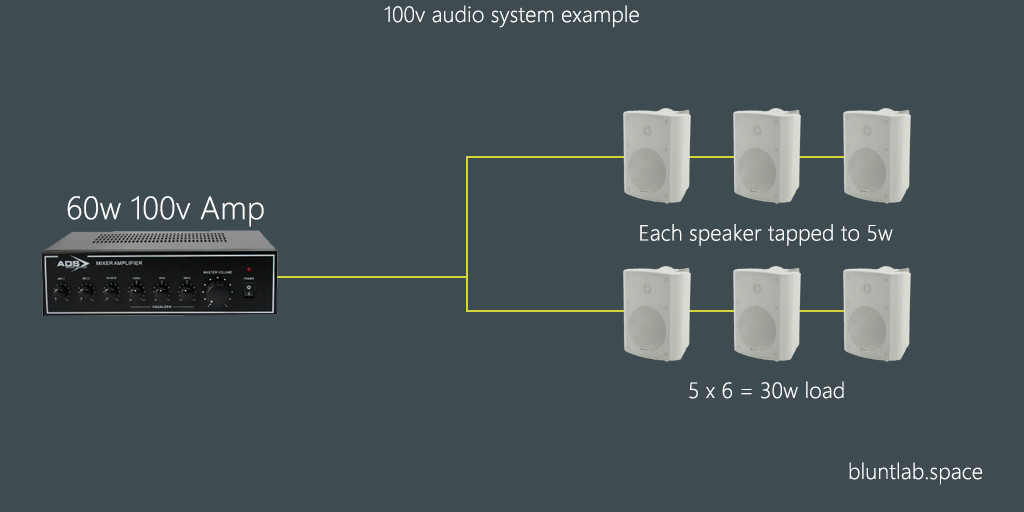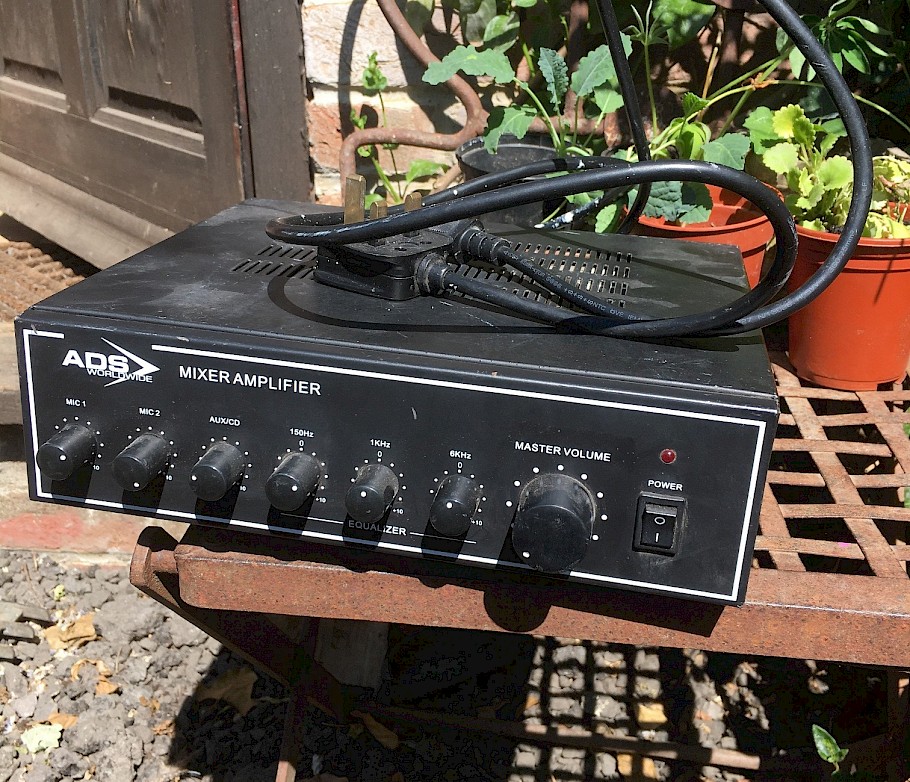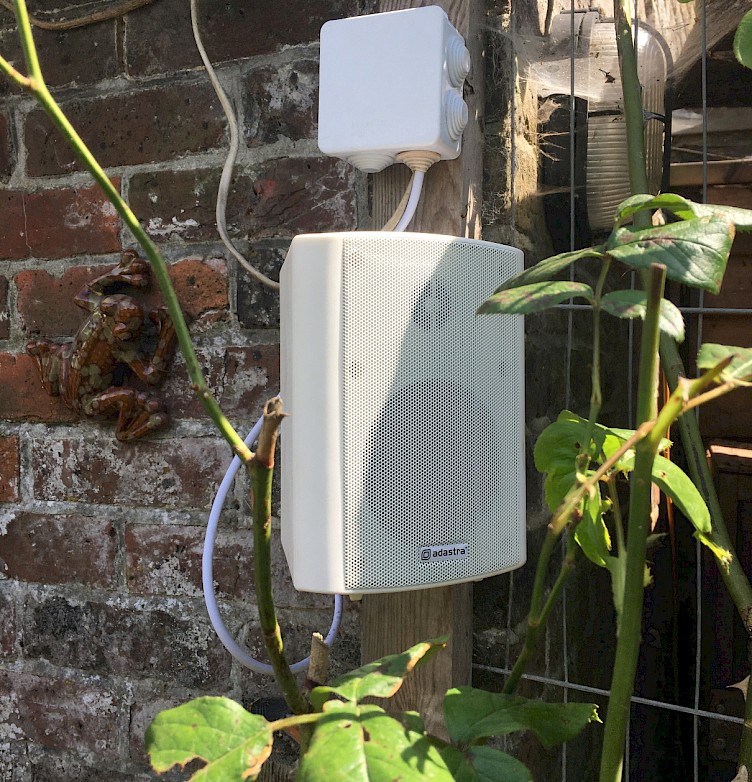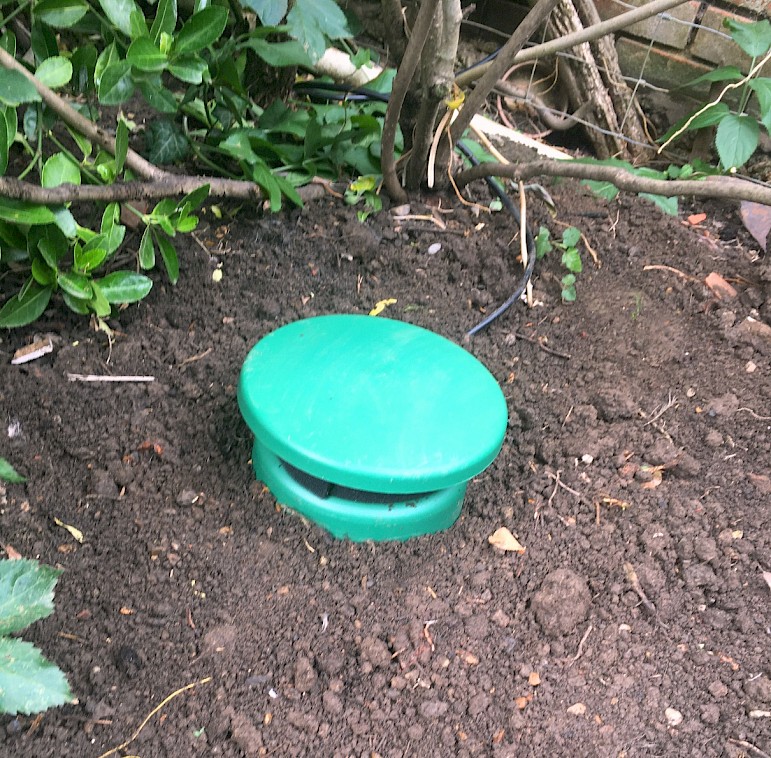This is not really homelab related but I thought it was nerdy enough to write a blog post about it. During the current (as of writing) lockdown in the UK my family has been revamping our long neglected garden. its been years since we had a nice garden so we have been making slow progress towards having the garden we want.
Part of that is an audio setup for music. I had the idea when I saw my mum had moved the smart speaker in the kitchen to being right by the window so she could listen to music and do the gardening but that was a clunky and risky solution (for the poor speaker) it also failed to cover most of the garden as our garden is L shaped so only about 10% was actually covered with the single speaker out the window method.
What we really needed was a proper background music system like you see in commercial installs as that would allow us to use multiple speakers all around the garden so we can have it set to a quiet volume and still hear it all around.
The are 2x ways to power speakers the is the low impedance method which is what you might already be familiar with. this is your 8Ω or 4Ω that you have used before on your home stereo or surround sound. this is an easy and cheap way to power speakers but has one massive drawback. and that is how many speakers you can drive.
Most amps can do between 2 and 4 speakers depending on how many ohms the amp can handle. but each speaker you add will change the ohms so beyond 4 speakers becomes a challenge and a huge mess of wiring as you would need 2x sets of wires from the amp.
But the is an easy solution that professional installs have been using for years and that is a high impedance setup using transformers in both the amp and speakers to raise the voltage between them to something far higher. like 70v or 100v. 70v is fairly common in the US but in the UK 100v is the most common voltage for these high impedance systems.
Why use high impedance?
So the reason this is better is it decouples the impedance of the speaker from the amplifier. you can run as many speakers as the amp can handle. say you have a 60w amp you can use 60 speakers if their all 1w a piece. most 100v speakers have various wattage taps you can select from. a higher wattage will be louder but will give you less headroom on your amp for other speakers so it is a bit of a balancing act.
The are downsides to this method though and that is the sound quality. its decent but the low end is just not as punchy and can distort on cheaper transformers which is annoying but honestly for me the sound is still very good for background use. and it simplifies the wiring greatly as you just wire the speakers all together.

An example 100v audio system
This is far easier as I can have a single wire from the amp and just keep daisy chaining speakers. as long as the total wattage of all your speakers is no more than the wattage of the amp you will be fine. but I recommend you do not use all the wattage. Use no more than 75% of the amps RMS wattage. so for this system that would be no more than 45w for speakers which does not sound like a lot but to be honest most small speakers will sound the same at 5w as they do at a 10w tap so its enough for 8 speakers at least.
What to buy
Setting up a 100v audio system is not that hard. all you need is the right amp and speakers. you need to have 100v (or 70v) equipment unless you want to deal with wiring up transformers which lets you convert a regular amp into a 100v amp. But the transformers cost a lot in the higher wattages so sadly it might not be viable for you to convert your regular amps into 100v variants.
The amp I originally bought was a used Adastra amplifier as I have found their specs to be quite decent with less than 2% distortion and the quality is not bad either but the used model I bought ended up being cancelled as the eBay seller had sold it already outside of eBay :| hate it when that happens. but no worries I found an ADS 60w amplifier for a mere £20 used. the Adastra I had found originally was 50w but the ADS has more distortion but for £20 it will work for now. I do plan to change it at some point.

You can buy these amplifiers for next to nothing on eBay all year around as their so common in retail/commercial locations that the is a huge supply of used ones out there. I would aim for at least 50w when buying one. you can find 15w/30w amps too but their fairly limited unless you run your speakers at a low wattage tap like 1 or 2w. you can find 120w amps for a decent price if you look hard enough but their less common.
For the speakers all you need is any speaker with a 100v transformer inside. of course make sure if your installing outside you get speakers designed to go outside. The speakers are cheap enough. I picked up the 4" Adastra BC4V for £27 brand new which I thought was decent for an outdoor speaker and the sound quality is fairly decent. it does not have tons of low end on it as the frequency response bottoms out at just 110hz but for background music it has a nice sound to it. I think the BC5V would be a better option though.

You can also mix speakers dont have to stick to one brand/type. Have some indoors some outdoors. Really flexible system, for exmaple you can get volume controls for each "zone" in your system so you can have a different volume level in each zone. Some more fancy amplifiers even have separate zone outputs and let you control what source you play in each zone. but their not that common used and quite pricey too.
My Final Setup
So this post has been in a draft state for a fairly long time. simply because I was slowly buying all the speakers and wiring to go beyond my single speaker temporary setup you see in the above picture.
So what did I end up buying in the end and how much did it cost. note that all these prices are of course one time deals I snagged on eBay but I see no reason why you could not recreate this with similar hardware.
- ADS 60w Amplifier - £19.99
- Adastra BP4V-W - £26.99
- Bose 32se speaker - £28.64
- Clever Acoustics GDS 20 - £54.99
- 100m of speaker cable £35
I reused a Google Chromecast audio for music streaming from phones or the google assistant powered speakers we have indoors. so the total for the system is £165.61
Most of that money was spent on the GDS 20 speaker but its awesome as it has allowed me to bury it for a hidden speaker

The sound from the 3x speakers combined is quite decent. the Bose sounds the best by far. it has punchy bass and don't distort either. the GDS 20 is also fairly decent but is a bit muddy sound wise. sounds more like a woofer than a full range speaker.
This is only the begining of this system. I do plan to add more speakers as part of the garden is currently music-less and the areas with music are all on one side. So need to work on that. but its already a million times better than the old method of moving the smart speaker from the kitchen.